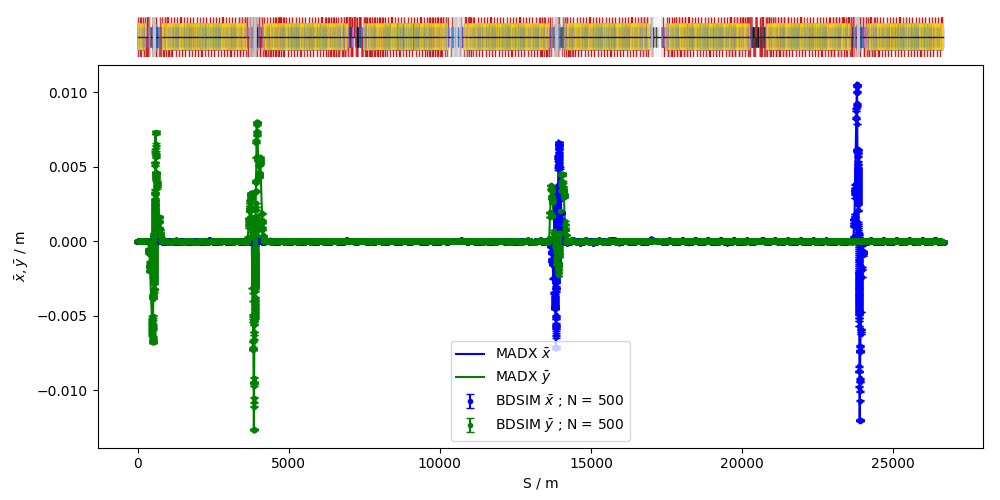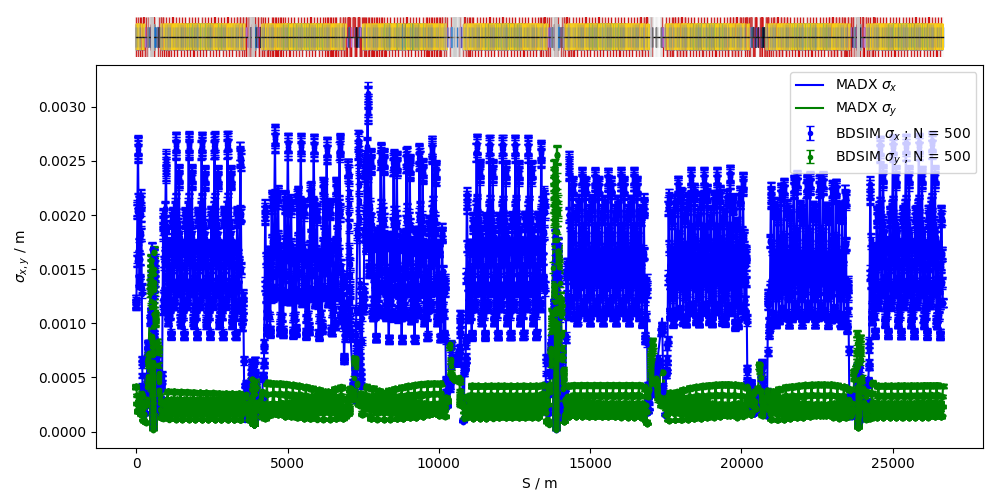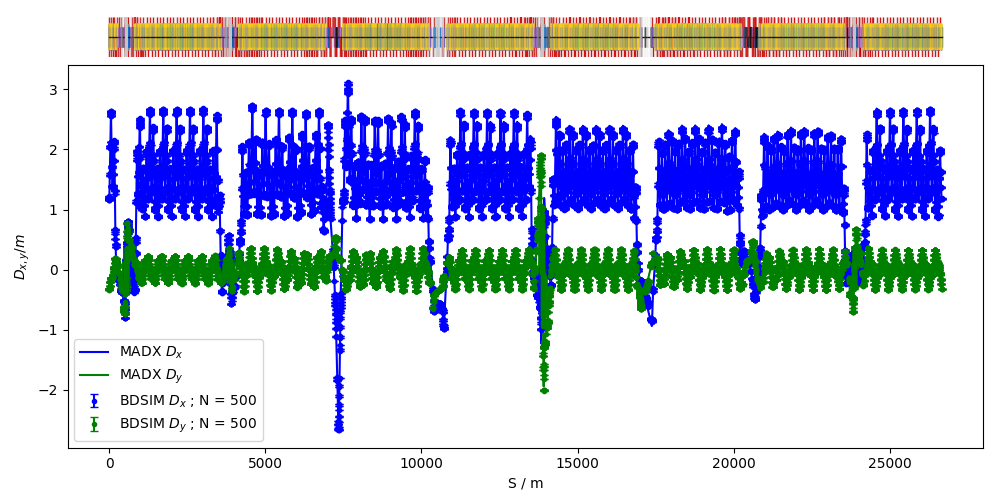Large Hadron Collider
The Large Hadron Collider is a approximately 27km in circumference proton proton collider at CERN, Gevena, Switzerland. It is the world’s highest energy particle accelerator and collider with a current centre of mass energy of 13TeV (6.5TeV per beam).
This is one of the largest BDSIM models. The model provided is of the 2017 optics with finite dispersion throughout.
Note
This is a cirular machine and should be executed with the
--circular option to control the number of turns the
particls will take.
Example:
bdsim --file=lhc2017.gmad --batch --circular
This will run 5 particles with a maximum of 1 turn.
It is not useful to visualise this model as the ring consists of 0.5m wide dipoles in a ringe approximately 8km across. Even if the visualiser resolution and computer display resolution supported 8000 pixels across, the magnet would be only one pixel. The viewpoint is automatically centred to the middle of the world so zooming in does not reveal anything as you zoom into the empty part of the ring.
It is possible to visualise, but the visualisation takes ~10mins and the visualiser commands should be used to move directly to a point of interest in global coordinates. The slowness is due to the Geant4 visualisation system.
Here, we show an examle optical comparison, In all cases, rebdsimOptics was used to calculate the beam properties and pybdsim used to make the comparison plots.

Beam mean position (i.e. ‘orbit’) from 500 particles tracked for 1 turn.

Beam size from 500 particles tracked for 1 turn.

Dispersion from 500 particles tracked for 1 turn.